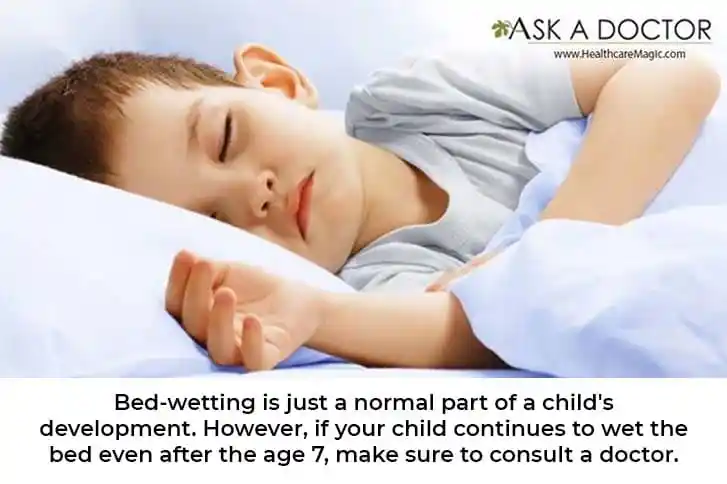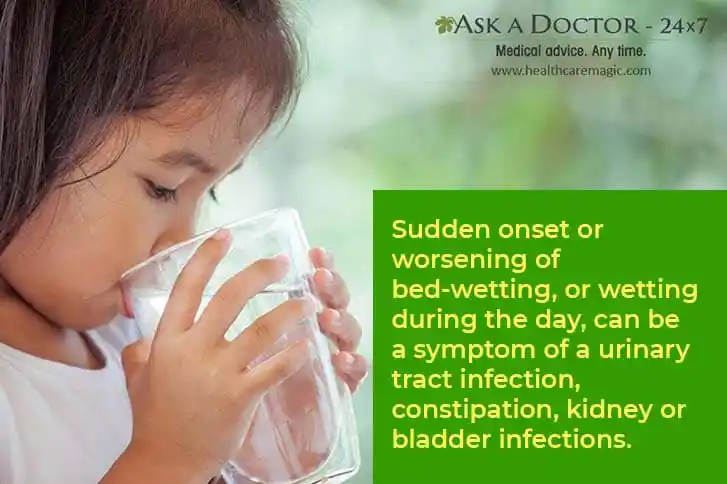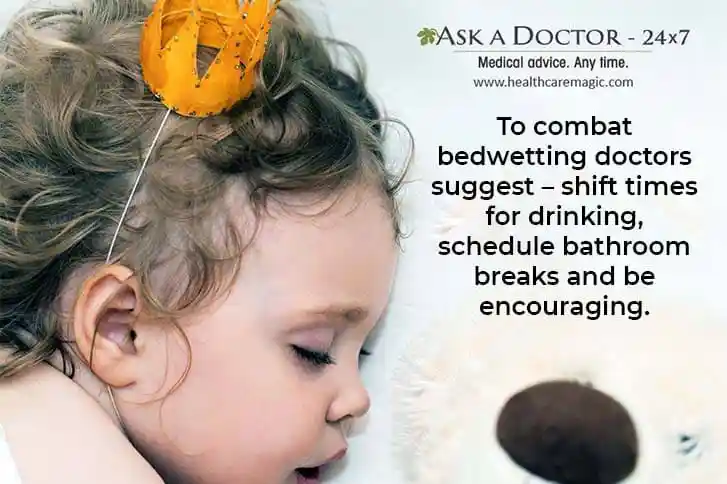Wet Bed Again? Find Out What Is Developmentally 'Normal' For Children, And When To Seek Help!!
Seeing your child take their first step, watching them utter their first word, and attending their school plays are just some of the many joys of parenthood. But this pleasure of witnessing your child’s growth and development also comes with its fair share of health issues that children face as they grow. In fact, one of the common childhood problems that every parent faces with their children is bed wetting.
If you too are one of the concerned parents, let’s explore what causes bed-wetting and find some easy-to-follow ways to deal with it.
If you too are one of the concerned parents, let’s explore what causes bed-wetting and find some easy-to-follow ways to deal with it.
Bedwetting: When It’s Normal and When It’s Not?

Bedwetting is usually outgrown with time. Until a child reaches the age of 2 or 4 and gets potty trained, s/he learns to remain dry during the day. Diapers are still recommended at night time until the age of five, because children might experience loss of bladder control while asleep.
You must talk to a pediatrician if there are signs of any medical problems, including:
Symptoms of bladder infection such as pain or burning when urinating, cloudy, dark, bloody, or foul-smelling urine,
- Urinating more often than usual
- Strong urges to urinate but passing only a small amount of urine
- Pain in the lower belly area or back
- Crying while urinating
If a child dribbles urine or has a weak urine stream, they can be signs of a congenital disability in the urinary tract. If your growing child has been experiencing incontinence after months or years of being dry, then it is a matter of concern.
Understanding the Causes of Bed-wetting in Children

Some of the common causes of bedwetting habit in children includes the following:
- Food and drinks: Certain types of food and beverages can trigger bed-wetting in children such as carbonated beverages, milk or dairy products, citrus fruits and juices, artificial sweeteners, honey, and sugar.
- Kidney or bladder infections: Blood in the urine or pain while urinating along with bed-wetting are just some of the many symptoms of kidney or bladder infection.
- Family history: Incontinence can sometimes run in families. Older children or teenagers are more likely to develop this condition if there is a family history of this condition.
Timing: Consuming water close to bedtime on a regular basis can trigger nighttime loss of bladder control.
Steps to Deal with Bed-wetting Issues

Here are the four easy-to-follow steps that can help you to control the bed wetting problems in children:
1. Reduce carbonated/sugary drinks
2. Emptying bladder before bed-time
Using the bathroom before bedtime will help prevent bedwetting episodes while asleep.
3. Easy access to the bathroom
Sometimes, when dealing with cases of bedwetting, getting to the bathroom on time helps ease the issue for the child. This is all the more true for disabled children.
Some of the ways that one can ensure easier access to the bathroom is:
Some of the ways that one can ensure easier access to the bathroom is:
- Bedside commode: keeping a bedpan or urinal at the bedside can help provide relief to older children or teenagers.
- Raised toilet seats: toilet seats that are raised are especially useful for children or teenagers who are disabled due to mobility issues.
- Clear path: Help ensure that the path between the bathroom and the bed is clear to prevent any hindrances or obstacles getting in the way at night as the child makes their way to the bathroom.
4. Wearable protection
As children get older, they might be uncomfortable with diapers that were used as a toddler. In such cases, one can purchase incontinence products that are disposable, for overnight usage.
Some such disposable products are:
- Incontinence pads: Multi-layered small sheets in the form of pads. These are specifically designed for absorbing the quick dispersion of urine.
- Absorbent underwear: Reusable undergarments designed for absorbing urine. Can be worn throughout the day as well as at night.
- Booster pads or youth diapers: These diapers are specifically designed to hold more urine than would be possible with an incontinence pad. Older children and teens can use this at night to ensure they get sound sleep and feel dry through the night.
5. Bedwetting alarms
These special alarms have moisture sensors that trigger a buzzer before the urine is completely dispelled from the bladder. This system has been known to reduce bed-wetting episodes over a period of time, provided it is used consistently.
As loving parents, we must be mindful of our children’s emotional and social needs. Bedwetting can be a source of social embarrassment and stress for both children and adults. Since bedwetting is a medical condition and is treatable, do not punish children and discourage their siblings from teasing them during an episode, as this can affect the child’s state of mind. Instead, be sensitive to your child’s feelings because treatment for incontinence can only work if the child feels safe, secure, and calm.
Ask a Specialist
Recent Questions


